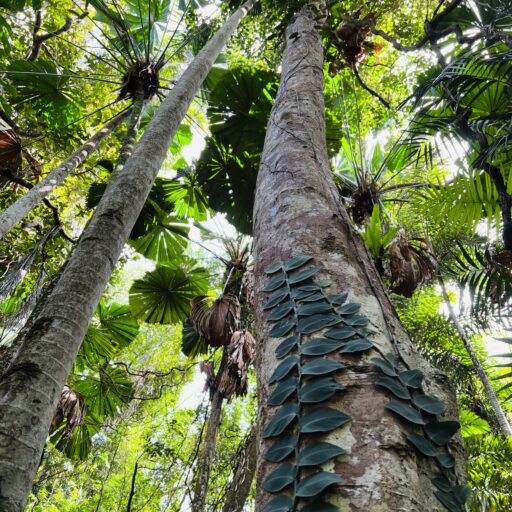Whenever we do an activity that burns fossil fuels, carbon dioxide (CO2) goes into the atmosphere, and too much of that is bad. Carbon offsetting helps negate, or “offset” this. When you purchase carbon offsets, you contribute to a mechanism that will help take this amount of CO2 back out of the atmosphere.

What is carbon offsetting?
There are natural mechanisms to deal with the carbon dioxide that we emit. Unfortunately, since the Industrial Revolution, our fossil fuel consumption has overwhelmed those mechanisms. Carbon offsets help by either:
- Augmenting the mechanisms that deal with the CO2 already emitted (ie by planting trees), or
- Preventing emissions before they occur (ie through technologies like solar or wind)
What are the natural mechanisms that deal with the CO2 we emit?
Photosynthesis is the process by which plants use solar energy and turn CO2 and water into organic (carbon-comprised) compounds/plants, emitting oxygen. Through photosynthesis, CO2 is removed from the atmosphere and stored as carbon-based “organic” matter in forests, soils and oceans. In the oceans, microscopic algae use photosynthesis to produce organic matter and limestone, sinking carbon to the ocean floor and safely out of the atmosphere. In forests, the organic compounds created are what make up trees and other plants. Soil stores a huge amount of carbon via complex processes involving microbes. (How this happens is very complex and beyond the scope of this blog post. You can read about it here.)
How does carbon offsetting work?
Carbon offsetting works by supporting mechanisms that either take CO2 back out of the atmosphere (mainly through photosynthesis), or decrease how much we put into the atmosphere, by using energy sources other than fossil fuels – like solar or wind power. You can choose to offset the carbon released when you, say, take a flight. You may choose to offset the carbon by putting money into, say, a forest. IN this case, money you contribute will go towards planting the forest, maintaining and protecting it, as well as “opportunity costs”. These are funds compensating a landowner for using their land for conservation rather than, say, grazing.
How much carbon dioxide am I emitting?
There are many calculators online to figure out how much CO2 you’re emitting. This is a great calculator at Ekos.co.nz. CO2 emissions are measured, sadly, in tons. I was shocked to learn that on my recent flight back to the US, each person on the plane was responsible for emitting 3 tonnes of carbon dioxide! Every day, 1 billion tons of carbon dioxide are emitted by fossil fuel combustion! This is an especially daunting number when one realizes that it takes 31-46 trees to offset 1 ton of carbon!

How do I know a carbon offset program is legitimate?
Great question! It’s important that any project you contribute to has been verified by an independent 3rd party. Toitu Envirocare is one such non-profit in New Zealand. Here is a list of some larger non-profits that verify and certify offsets in the US: The Gold Standard, Climate Action Reserve, American Carbon Registry, Verra, Green-e Climate Standard


